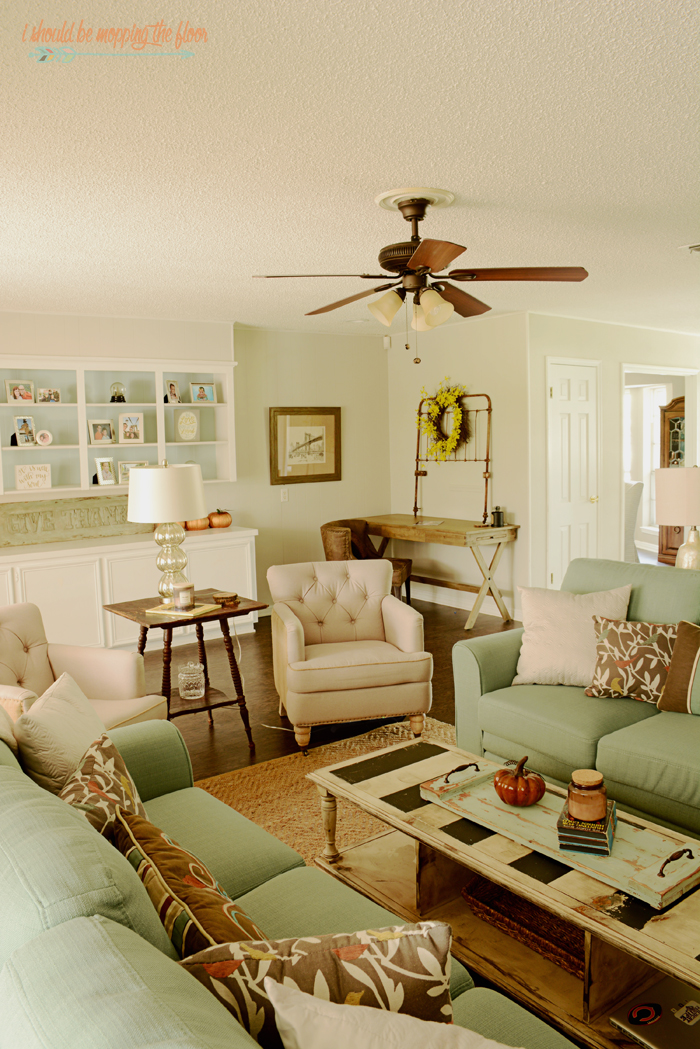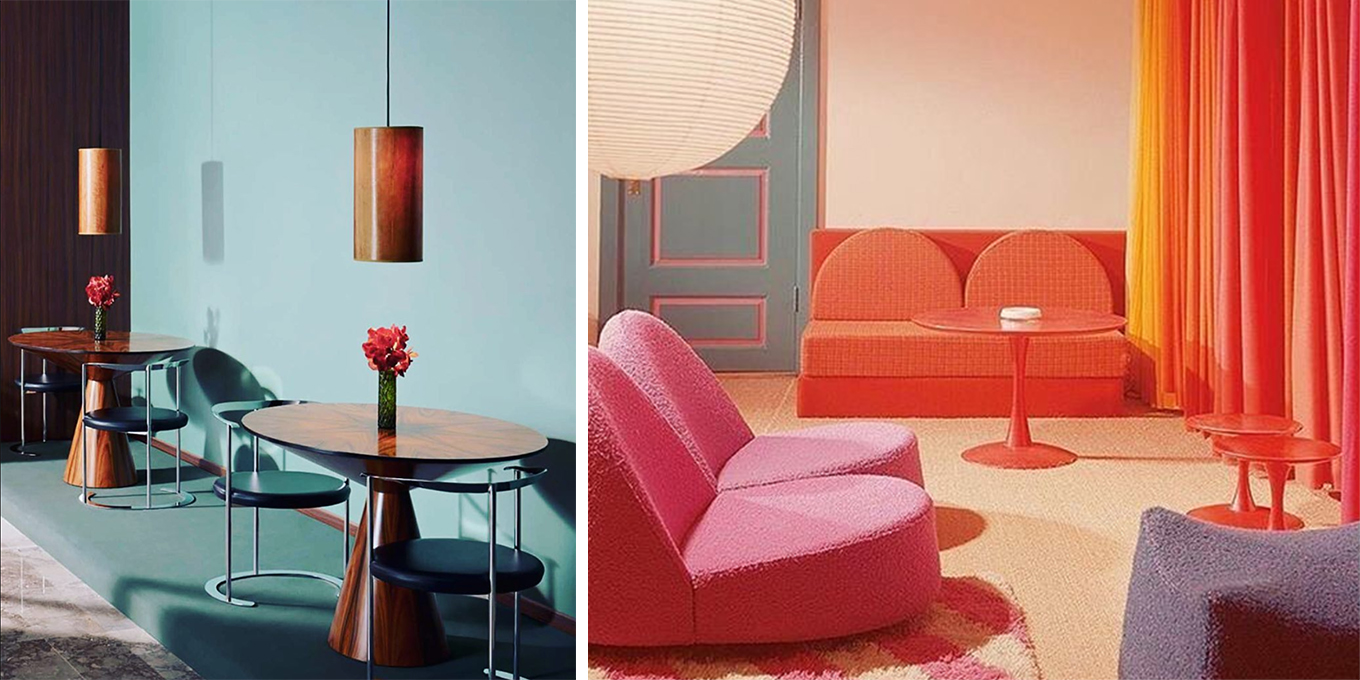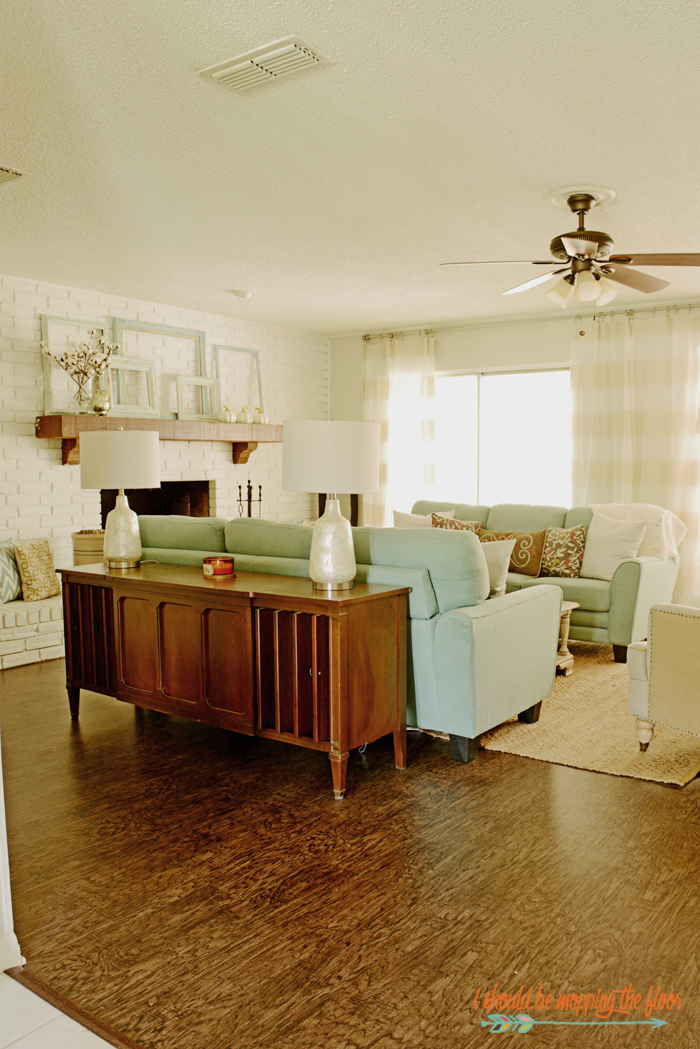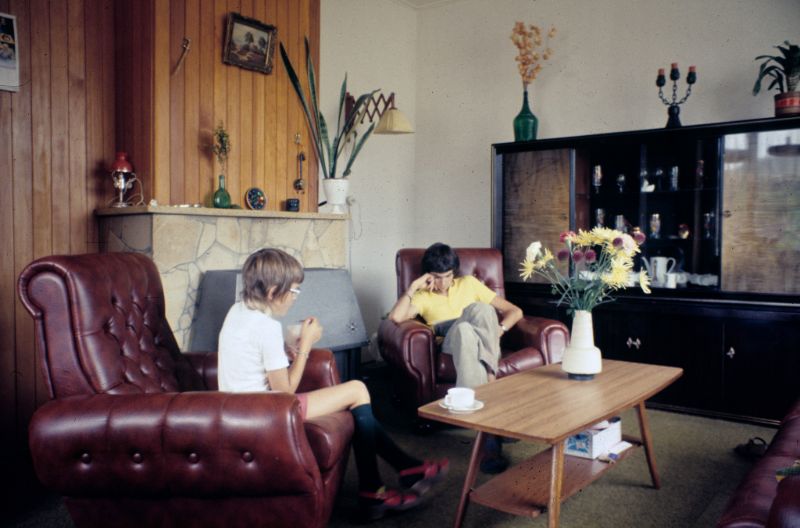The 1970s was a decade of bold and eclectic design, and the living room was no exception. From vibrant colors to geometric patterns, the 1970s living room was a reflection of the cultural and social changes of the era. Here are 10 design ideas to bring the groovy vibes of the 1970s into your modern living room. One of the most iconic features of 1970s living room design was the use of bold and bright colors. Orange, yellow, and avocado green were popular choices for walls and furniture, adding a sense of energy and warmth to the space. Another key element of 1970s design was the use of geometric patterns. These patterns were often seen on wallpaper, upholstery, and even flooring. Stripes, circles, and abstract shapes were all popular choices and could add a playful and quirky touch to the living room. When it came to furniture, the 1970s saw a shift towards more modular and flexible pieces. The popular modular sofa allowed for endless configurations and could be easily rearranged to suit different needs and spaces. In addition to the modular sofa, other popular furniture choices included bean bag chairs and lounge chairs with a futuristic and space-age design. These pieces were not only comfortable but also added a touch of fun and whimsy to the living room. The 1970s was also a time of mixing and matching different styles and eras. It was not uncommon to see a mid-century modern coffee table paired with a shag rug and a retro lamp. This eclectic approach to design allowed for personal expression and created a unique and personalized living space.1970s Living Room Design Ideas
In addition to furniture, the decor in a 1970s living room was just as important in setting the overall vibe and aesthetic. Adding plants and indoor greenery was a popular way to bring nature indoors and create a more relaxed and organic atmosphere. Curtains were also an important element in 1970s living room decor. Sheer curtains in bold colors or floral patterns were often paired with thick, patterned drapes for a layered and dramatic look. Wall art was another way to add personality and style to a 1970s living room. Abstract art and pop art were popular choices, often displayed in large and colorful frames. Retro posters and photographs were also commonly seen, adding a touch of nostalgia to the space. Finally, no 1970s living room was complete without some macrame or fringe accents. These bohemian-inspired decor pieces added texture and interest to the room and were often seen on wall hangings, throw pillows, and lamp shades.1970s Living Room Decor
The 1970s saw a departure from traditional and formal furniture styles, with a focus on comfort and flexibility. Along with the modular sofa and bean bag chairs, low-slung and curved furniture pieces were also popular choices for the living room. For storage, shelving units and bookcases in bold colors and geometric shapes were popular options. These pieces not only provided storage but also added a decorative element to the room. Furniture made from natural materials such as wood, rattan, and cane were also commonly seen in 1970s living rooms. These materials added warmth and texture to the space and complemented the natural and organic feel of the era. One unique furniture piece that gained popularity in the 1970s was the waterbed. These beds were seen as a symbol of the free-spirited and carefree lifestyle of the decade and added a fun and unconventional touch to the bedroom.1970s Living Room Furniture
When it came to interior design, the 1970s was all about creating a relaxed and casual atmosphere. This was reflected in the use of soft and plush materials such as shag rugs, velvet upholstery, and faux fur. Open floor plans were also popular, with the living room often flowing into the dining area or kitchen. This allowed for a more spacious and connected feel, perfect for entertaining and socializing. The use of mirrors was another key element of 1970s interior design. Large, oversized mirrors were often used to create the illusion of a bigger and brighter space, while smaller decorative mirrors were used to add a touch of glamour and reflect light. Finally, no 1970s living room was complete without ambient lighting. Lava lamps, disco balls, and colored light bulbs were popular choices, adding a psychedelic and funky vibe to the space.1970s Living Room Interior Design
If you're looking to add some 1970s vibes to your living room, there are plenty of sources for inspiration. One great place to start is by looking at vintage home decor magazines and catalogs from the era. These will give you a sense of the popular colors, patterns, and styles of the time. You can also draw inspiration from iconic 1970s TV shows and movies, such as The Brady Bunch, That '70s Show, and Boogie Nights. These visual references will give you a better understanding of the overall aesthetic and atmosphere of the decade. Finally, don't be afraid to get creative and put your own spin on 1970s design. Mix and match different elements and experiment with colors and patterns to create a unique and personalized living room that captures the spirit of the era.1970s Living Room Inspiration
The 1970s was all about bold, vibrant, and earthy colors. Along with orange, yellow, and avocado green, brown and rust were also popular choices for walls and furniture. In addition to these warm colors, cool tones such as blue, purple, and teal were also seen, adding a sense of balance and contrast to the space. For a more subdued color palette, neutral tones such as cream, beige, and taupe were also popular choices. These colors allowed for a more understated and versatile look, while still keeping with the overall 1970s aesthetic.1970s Living Room Colors
Aside from the use of bold colors and geometric patterns, there were other key trends that emerged in 1970s living room design. One of these was the indoor-outdoor living trend, which saw the integration of outdoor elements, such as plants and natural materials, into the interior space. The minimalism movement also gained popularity in the 1970s, with a focus on simplicity and function. This could be seen in the clean lines and simple shapes of furniture pieces, as well as the use of natural materials and textures. Finally, the 1970s also saw a rise in eco-friendly design. This was reflected in the use of sustainable materials, such as bamboo and cork, as well as the incorporation of natural light and ventilation into the design of living spaces.1970s Living Room Trends
If you're looking to give your living room a 1970s makeover, there are a few key changes you can make to achieve the look. Start by incorporating some of the key design elements mentioned above, such as bold colors, geometric patterns, and natural materials. Next, consider updating your furniture with some retro-inspired pieces, such as a modular sofa or a bean bag chair. You can also add some 1970s decor accents, such as macrame wall hangings or a lava lamp, to really bring the look together. Finally, don't be afraid to mix and match different styles and eras to create a unique and personalized living room that captures the essence of the 1970s.1970s Living Room Makeover
If you're planning a more extensive remodel of your living room, there are a few key design choices to consider that will give your space a 1970s feel. Start by choosing a color palette that includes warm, earthy tones, as well as bold pops of color. For flooring, consider installing shag carpet or patterned tiles for a true 1970s look. You can also incorporate natural materials, such as wood or rattan, into your furniture and decor choices. Finally, don't be afraid to get creative and add some unexpected elements, such as a conversation pit or a sunken living room, to really capture the essence of 1970s interior design.1970s Living Room Remodel
The 1970s was a decade of retro style and nostalgia, and this can be seen in the design of living rooms from the era. To achieve a retro 1970s look in your living room, start by incorporating some vintage furniture pieces, such as a mid-century modern sofa or a retro coffee table. Next, add some decorative accents, such as a lava lamp or a record player, to really bring the retro vibes to life. You can also display some vintage posters or artwork on the walls to add a touch of nostalgia to the space. Finally, don't be afraid to mix and match different styles and eras to create a unique and personalized living room that captures the fun and funky spirit of the 1970s.1970s Living Room Retro Style
The Evolution of 1970s Living Room Design in the UK

The 1970s - A Decade of Bold and Eclectic Design
 The 1970s were a decade marked by bold and eclectic design trends in the UK, especially when it came to living rooms. This era was all about self-expression and breaking away from traditional design norms. As a result, the living rooms of the 1970s were a reflection of the free-spirited and experimental nature of the time.
The 1970s were a decade marked by bold and eclectic design trends in the UK, especially when it came to living rooms. This era was all about self-expression and breaking away from traditional design norms. As a result, the living rooms of the 1970s were a reflection of the free-spirited and experimental nature of the time.
Key Features of 1970s Living Rooms
 One of the most distinct features of 1970s living rooms was the use of bold and vibrant colors.
Orange, yellow, and green
were popular choices for walls and furniture, often paired with
geometric patterns
in bold hues. This color scheme was a stark contrast to the muted and neutral tones of the previous decade.
Another key element of 1970s living room design was the use of
shaggy, textured fabrics
. From shag carpets to velvet upholstery, these materials added a touch of luxury and comfort to the space. The incorporation of different textures also added depth and visual interest to the room.
One of the most distinct features of 1970s living rooms was the use of bold and vibrant colors.
Orange, yellow, and green
were popular choices for walls and furniture, often paired with
geometric patterns
in bold hues. This color scheme was a stark contrast to the muted and neutral tones of the previous decade.
Another key element of 1970s living room design was the use of
shaggy, textured fabrics
. From shag carpets to velvet upholstery, these materials added a touch of luxury and comfort to the space. The incorporation of different textures also added depth and visual interest to the room.
Bringing the Outdoors In
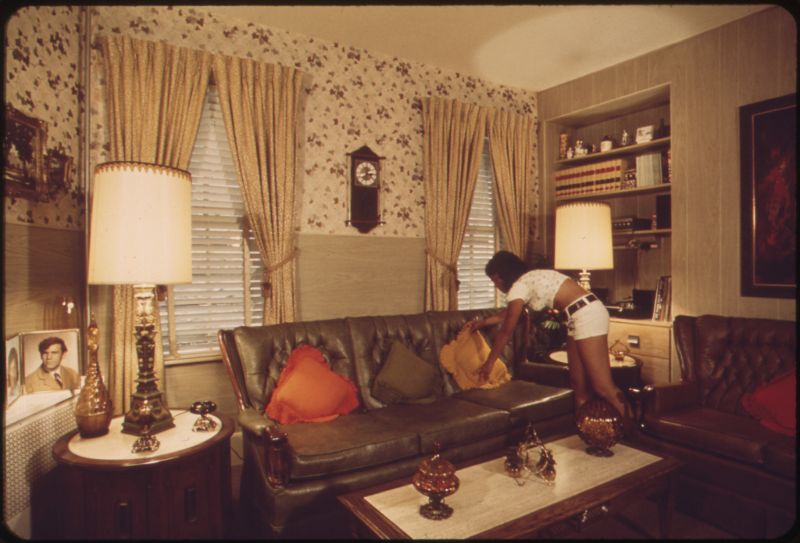 In the 1970s, there was a growing interest in nature and environmentalism. This was reflected in interior design, particularly in living rooms. Many homeowners brought the outdoors in by incorporating
indoor plants and natural elements
into their living spaces. This not only added a touch of greenery but also created a sense of balance and harmony in the room.
In the 1970s, there was a growing interest in nature and environmentalism. This was reflected in interior design, particularly in living rooms. Many homeowners brought the outdoors in by incorporating
indoor plants and natural elements
into their living spaces. This not only added a touch of greenery but also created a sense of balance and harmony in the room.
The Rise of Open Concept Living
 The 1970s also saw the rise of the open concept living room, where the space seamlessly flowed into the dining and kitchen areas. This open layout was a stark departure from the compartmentalized rooms of the past, creating a more spacious and airy feel in the home.
The 1970s also saw the rise of the open concept living room, where the space seamlessly flowed into the dining and kitchen areas. This open layout was a stark departure from the compartmentalized rooms of the past, creating a more spacious and airy feel in the home.
Bringing Back Retro Elements
 The 1970s living room design has seen a resurgence in recent years, with many homeowners incorporating retro elements into their modern homes. From
statement wallpaper
to
bold furniture pieces
, the 70s aesthetic has become a popular choice for those looking to add a touch of nostalgia and personality to their living spaces.
The 1970s living room design has seen a resurgence in recent years, with many homeowners incorporating retro elements into their modern homes. From
statement wallpaper
to
bold furniture pieces
, the 70s aesthetic has become a popular choice for those looking to add a touch of nostalgia and personality to their living spaces.
In Conclusion
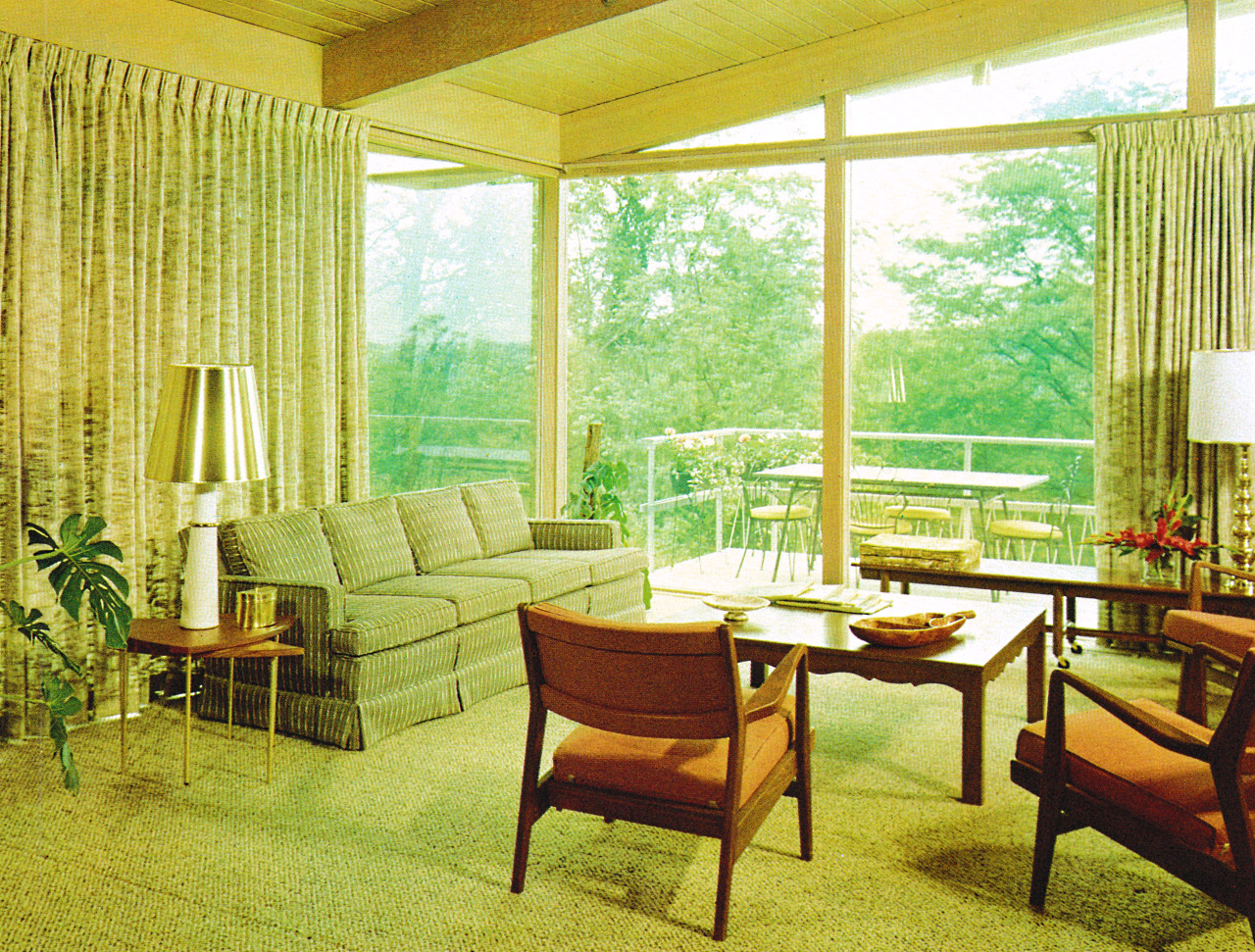 The 1970s were a defining era in interior design, particularly for living rooms in the UK. With its bold colors, textures, and incorporation of nature, this decade ushered in a new wave of creativity and self-expression in home design. Today, the 70s aesthetic continues to inspire and influence modern living room design, proving that good design truly stands the test of time.
The 1970s were a defining era in interior design, particularly for living rooms in the UK. With its bold colors, textures, and incorporation of nature, this decade ushered in a new wave of creativity and self-expression in home design. Today, the 70s aesthetic continues to inspire and influence modern living room design, proving that good design truly stands the test of time.

